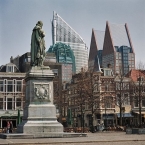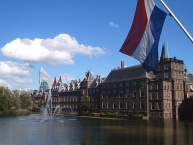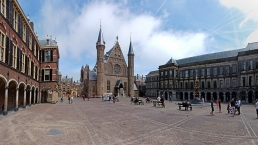Radweg Mittelland-Route
Nr. des Radweges LF4
Aktionen
![]()
Bitte warten - Kartendaten werden geladen
Erstellt am 24.10.2011,
zuletzt geändert von biroto-Redaktion am 17.04.2024
Aktionen
Strecken-Merkmale
Gesamtlänge in km
307
Informationen zu Rechten an den GPS-Track-Daten | |
|---|---|
Rechte-Inhaber | OpenStreetMap and Contributors + biroto-Redaktion (biroto.eu) |
Rechte-Ausprägung / Lizenz | Enthält Daten von OpenStreetMap, die hier unter der Open Database License(ODbL) verfügbar gemacht werden |
Link zur Rechtebeschreibung | |
gpx-Datei übernommen aus | |
gpx-Datei hochgeladen | durch biroto-Redaktion am 17.04.2024
|
Gesamtzahl Trackpoints
4.658
Trackpoint-Dichte per km
15
Endorte
Start
The Hague, South Holland, NL (1 m NHN)
Ziel
Enschede, Overijssel, NL (52 m NHN)
Informations-Quellen
Fahrradfreundliche Unterkünfte, Sehenswertes und Infrastruktur
Name u. Anschrift
Breite / Länge
Tel.
Fax.
Mobile
Art d. Unterkunft
Radler-freund-lichkeit
Strecken-km
km zur Strecke
Höhe
0 km
2,0 km
12 m
0 km
0,6 km
15 m
Öffnungszeiten
Monday: 12:00 - 18:00 hrs
Tuesday - Friday: 10:00 - 18:00 hrs
Saturday: 10:00 - 17:00 hrs
Sunday and public holidays: 12:00 - 17:00 hrs
We are a ‘’Pin Only’’ store.
0 km
0,8 km
6 m
Informationen zu Urheber-Rechten | |
|---|---|
Rechte-Inhaber | |
Rechte-Ausprägung / Lizenz | by-sa: CREATIVE COMMONS Namensnennung, Weitergabe unter gleichen Bedingungen |
Link zur Rechtebeschreibung | |
Bild übernommen aus | |
Bild hochgeladen | durch biroto-Redaktion am 31.12.2018
|
Informationen zu Urheber-Rechten | |
|---|---|
Rechte-Inhaber | |
Rechte-Ausprägung / Lizenz | by-sa: CREATIVE COMMONS Namensnennung, Weitergabe unter gleichen Bedingungen |
Link zur Rechtebeschreibung | |
Bild übernommen aus | https://commons.wikimedia.org/wiki/File:Den_Haag_Binnenhof.jpg |
Bild hochgeladen | durch biroto-Redaktion am 31.12.2018
|
Informationen zu Urheber-Rechten | |
|---|---|
Rechte-Inhaber | |
Rechte-Ausprägung / Lizenz | cc0: Public Domain keine Rechte vorbehalten |
Link zur Rechtebeschreibung | |
Bild übernommen aus | https://commons.wikimedia.org/wiki/File:2010-05-22-den-haag-by-RalfR-41.jpg |
Bild hochgeladen | durch biroto-Redaktion am 31.12.2018
|
The Hague (Dutch: Den Haag or 's-Gravenhage) is a city in the province of South Holland in the Netherlands. It is the seat of the Dutch parliament and government, and will be the residence of King Willem-Alexander (until restoration works on Huis ten Bosch are completed, the Royal family lives in Wassenaar). It is not the capital city, which is Amsterdam. The municipality (which is the city) has more than 525,000 inhabitants, it is the third largest city of the Netherlands.
The Hague lies on the North Sea and is home to Scheveningen ![]() , the most popular seaside resort of the Netherlands. Also the smaller resort of Kijkduin is part of the city.
, the most popular seaside resort of the Netherlands. Also the smaller resort of Kijkduin is part of the city.
Understand
Internationally, The Hague is often known as the "judicial capital of the world" due to the many international courts that are located in the city. Among these are the International Court of Justice, the International Criminal Tribunal for the former Yugoslavia and, since 2004, the International Criminal Court. Beside these institutions, The Hague is home to more than 150 international organizations, and to many EU institutions, multinational companies and embassies. This gave the city a distinct international character — one that is noticeably different from Amsterdam. Rather than having the many foreign tourists and fortune-seekers attracted by Amsterdam's reputation for excitement and liberalism, The Hague generally has more expatriates working and living in the city because of the number of international institutions and companies. Because of this, The Hague has a reputation as a wealthy, conservative and somewhat sedate city.
The Hague has very little of the edginess and excitement of Amsterdam; however, it provides well for its inhabitants in different ways, such as large areas of green space, 11 km of coastline, attractive shopping streets and an extensive multicultural scene. Rather than having canals like other Dutch cities, The Hague has streets and avenues that are just a little bit wider than those in the rest of the country, giving the city a more continental feel. Instead of the typical Dutch renaissance 17th-century step-gabled houses, it has 18th-century mansions in baroque and classicist styles. The city is considered by many as the most stately of the country. Just outside the city centre, posh neighbourhoods effuse a more 19th century look with eclectic and art nouveau architecture.
The Hague offers great architecture, from the picturesque government complex of the Binnenhof, to the grand and stately mansions on Lange Voorhout. Museums like the Mauritshuis rank among the best in the country. For food aficionados, The Hague offers some of the country's best Indonesian cuisine, due to large-scale immigration from this former Dutch colony.
Over recent decades, the city has undergone an extensive amount of development in the form of modern architecture projects. Recent constructions include the City Hall and Central Library by American architect Richard Meier, De "Snoeptrommel" (known by the locals as Candy-Box) - a round shopping centre next to the old town hall, and a collection of post-modern, brick-clad office towers in between the city hall and the Centraal railway station, which provide new housing for a number of ministries.
See
Centre
The heart of the city contains most of the historic architecture from the medieval, renaissance, and Baroque periods and is easily accessible on foot. You'll also find lots of outdoor cafes and shopping near the Plein on the Lange Poten or just east of there on the Hofweg.
- ⊙Plein (southwest from Centraal Station along Herengracht and Korte Poten). This square — Plein simply translates as 'square' in English — is one of the most elegant in the centre. Located right next to the Binnenhof, it is lined with historic government buildings on three of its four sides. The north side is lined with bars and cafés, which spill out onto the square in summer. These sidewalk cafés are quite popular with politicians from the neighbouring Binnenhof, and even Prime Minister Mark Rutte can be spotted here with a pint regularly. The square is also the scene for demonstrations against government policies. The statue in the middle is that of William of Orange, heralded as the founding father of the Dutch nation.
- ⊙Binnenhof (northwest of the Plein, trams 1 and 9 (Spui stadhuis stop), trams 2, 3, 4 & 6 (Spui/Centrum stop)), ☎ +31 70 7570200. M-Sa 10AM-4PM; guided tours only (in Dutch +audio guides on some other languiges). The Binnenhof (Inner Court) is a castle built in the 13th century as residence of the count of Holland. Ever since, it has almost subsequently been the seat of the government of Holland, and later all of the Netherlands. It used to be surrounded by moats on all sides. Since then it has been modified countless times to accommodate the expanding Dutch government. The moats have been filled, but the castle still borders on a pond (the Hofvijver, Court Pond). In its waters the old buildings continue to mirror themselves. Today, the Binnenhof houses the two chambers of the Dutch parliament and the Prime Minister's office in a small round tower opposite the Mauritshuis. Enter through one of the gates on Plein or Buitenhof and you will find yourself in a medieval enclosed courtyard, surrounded by architecture from the 13th up to the 19th century. There may be crowds gathered here on occasion because of public demonstrations, TV airings or receptions for foreign officials. In the centre stands the Ridderzaal (Knight's Hall), the centrepiece of the castle, today used for ceremonial purposes. Unfortunately, the other splendid rooms of the complex are closed to the general public. It is possible, however, to attend the meetings of the parliament. The House of Representatives of the parliament meets every Tuesday, Wednesday and Thursday, in a modern chamber from 1992. The Senate meets on a weekly basis, on Tuesdays, and does so in a splendid 17th century Dutch-styled chamber with a lavishly painted ceiling. €5-€10 (see online reservation for tours and prices). (updated Jun 2016)
- ⊙Mauritshuis, Plein 29 (next to the Binnenhof). M-S 10AM-6PM, Th 10AM-8PM, and also M 10AM-5PM from Apr-Aug. Housed in a 17th-century palace overlooking the water of the Hofvijver pond, the Royal Picture Gallery Mauritshuis contains the former collection of last Dutch stadtholder, William the V. While the museum is quite small (a complete tour takes a little over an hour) it contains some of the most famous work from the old Dutch Masters, including Johannes Vermeer (Girl with a Pearl Earring and View of Delft), Rembrandt van Rijn (The Anatomy Lesson of Dr. Nicolaes Tulp), Andy Warhol ("Queen Beatrix"), Rembrandt self-portraits at ages 20 and 63, and others. It is well worth a visit, especially as it has just been renovated. Adult €14, under 18 get in free. (updated Apr 2015)
- ⊙Galerij Prins Willem V (Prince William V Gallery), Buitenhof 33. Tu-Su 12am-5pm. This gallery essentially is a part of Mauritshuis. A collection of 18th century paintings from the Mauritshuis is on display there. €5; combined ticket with Mauritshuis €17,50. (updated Jun 2016)
- ⊙Gevangenpoort (Prison Gate Museum), Buitenhof 33, ☎ +31 70 3460861. T-F 10AM-5PM, Sa-Su 12PM-5PM. Built in 1370 as an entrance gate to the Binnenhof complex, the Gevangenpoort (Prison Gate) was converted into a prison in 1420. In 1853 the prison shutdown and it was turned into a museum. For a taste of medieval justice, have a look at their collection of torture instruments and get locked inside an original medieval cell block. € 7,50; + Galerij Prins Willem V € 10,00. (updated Jun 2016)
- ⊙Bredius Museum, Lange Vijverberg 14, ☎ +31 70 3620729. T-Su 11AM-5PM. The private collection of Abraham Bredius, a 19th-century art historian contains Dutch Baroque art, as well as drawings, porcelain and crafted silver. €4.50.
- ⊙Lange Voorhout (northwest along either side of the entrances to the Binnenhof). This former extension of The Hague Forest is now a large tree-lined square, bordered on all sides by grand 18th century townhouses. The large Baroque building on the west side is the 'Huis Huguetan', home to the Dutch supreme court. The square is especially pretty in spring, when its crocuses are in bloom. On Thursdays and Sundays there is a very good antique and book market. Every summer, the square hosts Den Haag Sculptuur (The Hague Sculpture), a free outdoor sculpture exhibition. The fortified building on the corner is the US Embassy and has been a point of contention among locals and embassy officials because of the heightened security.
- ⊙Escher in Het Paleis, Lange Voorhout 74 (trams 16, 17 (Korte Voorhout stop)), ☎ +31 70 4277730. T-Su 11AM-5PM. This former royal palace was converted in 2002 into a museum dedicated to the famous Dutch graphic artist M.C. Escher. The first two floors display prints, sketches and archive material showing how Escher progressed from realistic pictures to his later works of optical illusion and geometrical pattern. The top floor offers a trip through Escher's worlds with interactive screens and games and a special Escher Room. There are also scavenger hunts for younger children. On Sunday and during the school holidays, there are workshops for children. €9.50.
- ⊙Grote Kerk (St Jacobs kerk). Now a meetings venue. (updated Jun 2016)
- ⊙Oude Stadhuis. The original town hall is a small building from the 15th century when The Hague itself was a small settlement around the Royal Court. In the 18th century it was expanded upon and now has a grand façade facing the 15th-century Grote Kerk (Big Church), originally used as city's main place of worship, but now primarily functions as an exhibition space.
- ⊙Stadhuis. In the early 1990s, the municipality moved to this enormous white building by American architect Richard Meier, nicknamed by locals as the Ice Palace. Walk in to have a look at the lofty main hall, which has exhibits on various topics related to the city. The two air bridges through the hall connecting the various offices had to be fenced off to prevent suicides, but still make for a nice view of the atrium below. The city hall borders a large, somewhat barren modern square with a fountain. It contrasts sharply with the Baroque Nieuwe Kerk (New Church), located in a small park in the other side of the road.
- ⊙Denneweg. This street is a prime area for finding antique and specialty shops. It also has some good pubs and upscale restaurants to recharge in after shopping. Parallel to the Denneweg run the Hooigracht and Smidswater canals, which are two of the very few canals in The Hague compared to other major Dutch cities and towns.
- ⊙Paleis Noordeinde (near Prinsessewal). This is the royal palace that King Willem-Alexander uses as his office. While the inside is not open to the public, the 17th-century façade can be seen from Noordeinde street, which also has a large number of art galleries. The gardens on the opposite side of the palace are accessible to the public for walking.
Out of the centre
- ⊙Paleis Huis ten Bosch (in the middle of the Haagse Bos park). It is one of three official residences of the Dutch Royal Family. While the surrounding park is open, the palace itself is not open to visitors.
Eat
Just as Indian restaurants abound in the UK, the Netherlands has an excellent tradition in Indonesian and colonial Dutch-Indies cuisine. After Indonesia became independent from the Netherlands in 1945, the country received a large number of former colonials from Dutch and mixed descent who had been forced to leave the newly independent colony. The Hague received a relatively large number of these people and is still a centre of the Dutch-Indonesian community.
- Haagsche brood- en banketbakkerij Hans en Frans, Denneweg 128. 07.00 - 17.00. Famous local bakery. Try their Haagse Kakker, which is a big sweet bread filled with raisins and nuts. Great to bring home as a gift. Other specialties include Haagsche Ooievaartjes (cookies) and Haags Jantje (chocolate). They are also located at Theresiastraat 131 and Reinkenstraat 50
- Restaurant Alexander The Hague, Denneweg 138 2514 CL, ☎ +31 70 3648175. 17:00 - 23:00. 3 course menu € 27.50 per person.
- ⊙Burgerz, Prinsestraat 23, ☎ +31 70 3560062. Funky gourmet hamburger restaurant serving 25 home-made and pure burgers: beef, lamb chicken, salmon, tuna and vegetarian. Also for take-away and from sept 2011 also in Delft.
- Dap & co, Schokkerweg 39, Scheveningen, ☎ +31 70 3223969. Two story glass restaurant with magnificent views overlooking the harbor. Serving meat and fish grilled on the green egg as well as a selection of delicious home-made hamburgers. Open 7 days/week for lunch and dinner and the perfect place for parties, receptions and meetings.
- ⊙'t Achterommetje, Achterom, 71 (across the parliament). A nice place for a standard Dutch lunch or a coffee.
Indonesian, city centre
- ⊙Garoeda, Kneuterdijk 18 A, ☎ +31 70 3648175. Historic place (founded 1949) with waiters in traditional costumes, spread out over two floors.
- ⊙Poentjak, Kneuterdijk 16, ☎ +31 70 3600522. Next to Garoeda. Interior is a time-warp to the 1920s. ~€20 for dinner.
- ⊙Istana, Wagenstraat 71, ☎ +31 70 3600997. Small restaurant with somewhat minimalist decor. Excellent sateh.
Informationen zu Urheber-Rechten | |
|---|---|
Rechte-Ausprägung / Lizenz | by-sa: CREATIVE COMMONS Namensnennung, Weitergabe unter gleichen Bedingungen |
Link zur Rechtebeschreibung | |
Text(e) übernommen von: |
Wikivoyage contributors, 'The Hague', Wikivoyage, The FREE worldwide travel guide that anyone can edit, 15 November 2018, 12:30 UTC, <https://en.wikivoyage.org/w/index.php?title=The_Hague&oldid=3650066> [accessed 31 December 2018] |
übernommen / bearbeitet am | 31.12.2018
|
übernommen / bearbeitet durch |
|
4 km
0,9 km
248 m
15 km
4,4 km
246 m
![]()



